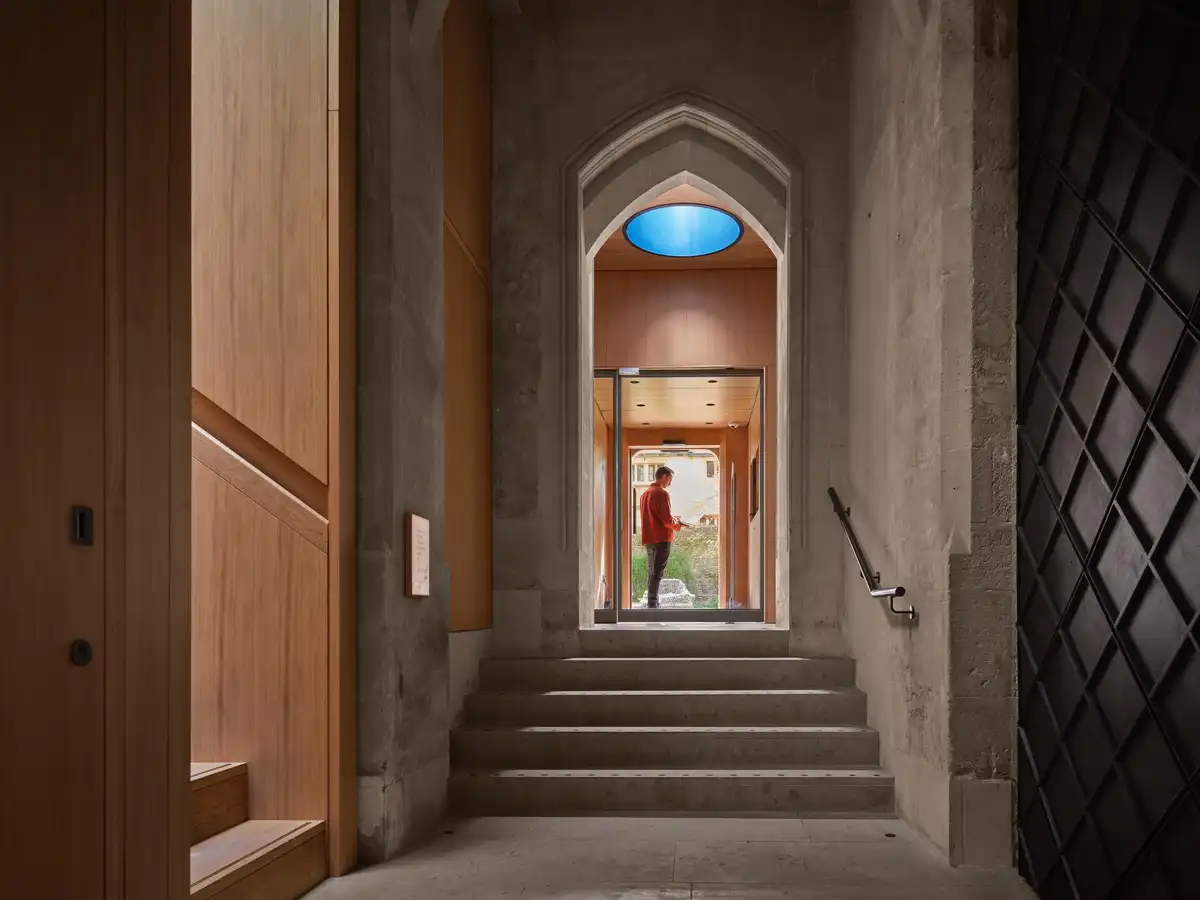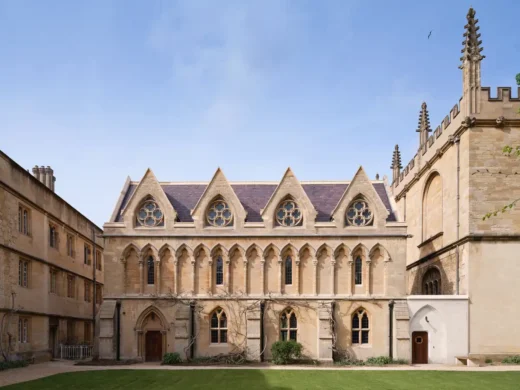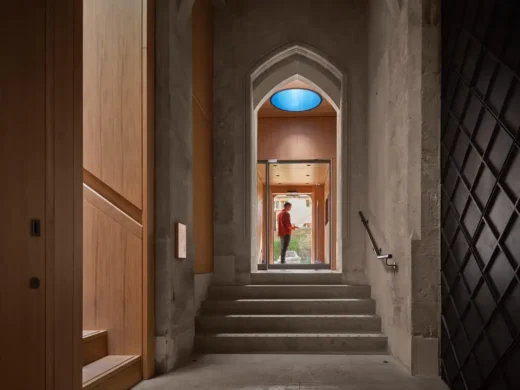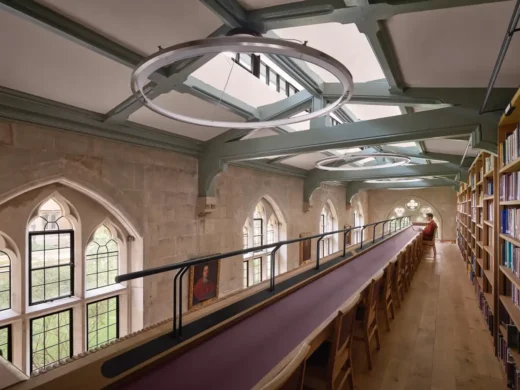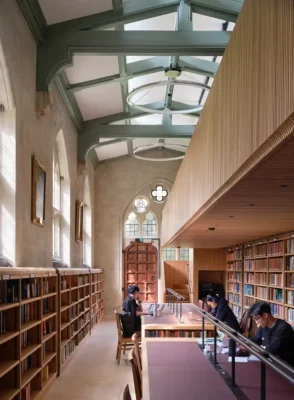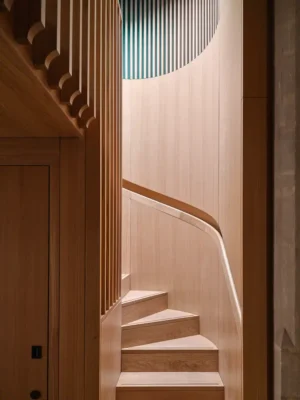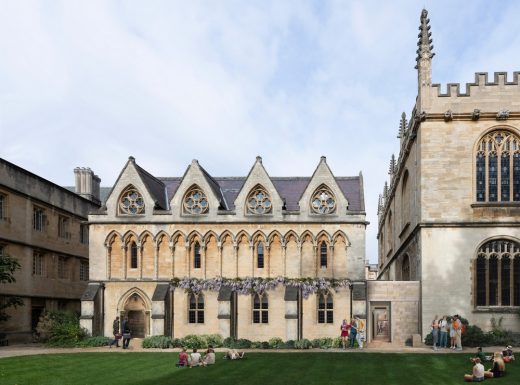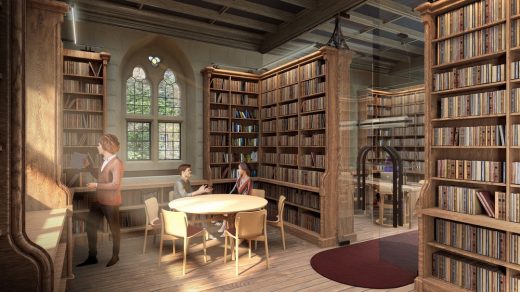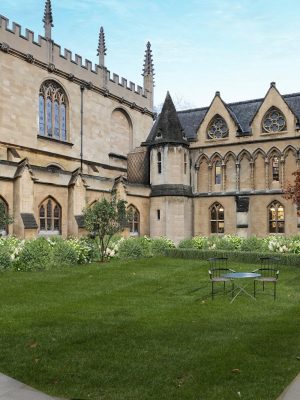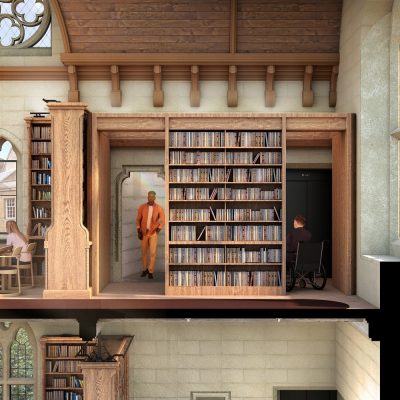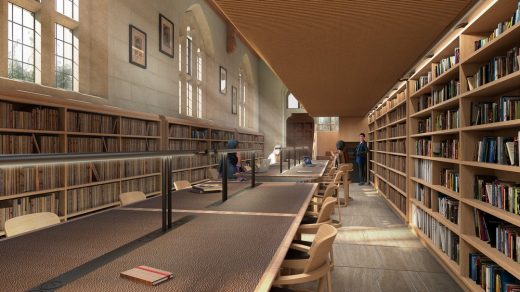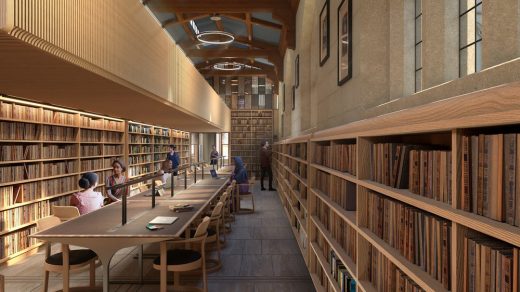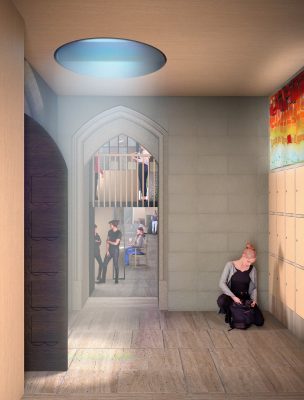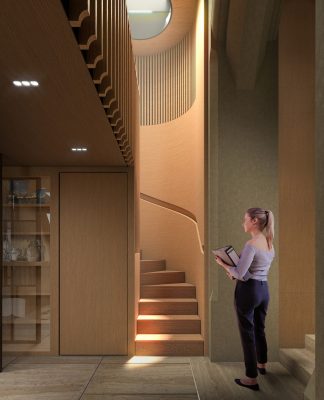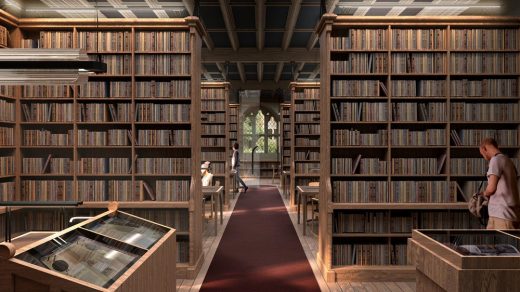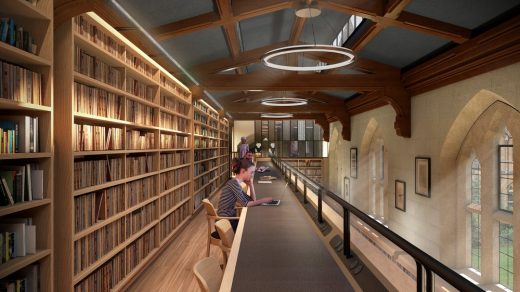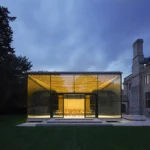Exeter College Library University of Oxford Building award news, Historic English architecture images
Exeter College Library at the University of Oxford
22 May 2025
The RIBA South Awards 2025 winning project
Design: Nex with Donald Insall Associates
The Jackson Library – Exeter College, Oxford by Nex (Building of the Year sponsored by EH Smith, Project Architect of the Year – Joe Dent, Conservation Award sponsored by Velux), with Donald Insall Associates.
– A radical transformation of a deteriorating library in Exeter College has created a fresh, robust and light-filled environment for studying, by Nex.
The Jackson Library – Exeter College, Oxford by Nex
Jury citation:
The Grade II listed Jackson Library stands in the historically sensitive heart of Oxford and within Exeter College, surrounded by other listed buildings. Built to George Gilbert Scott’s designs in the 1850s, its fabric had deteriorated and its facilities were inadequate in terms of comfort, accessibility and energy consumption. The client knew their building and produced a careful brief for its refurbishment, giving clear guidance to architects and establishing priorities to support interventions.
The architects were then appointed through a competition, focusing on the approach to the brief rather than a preconceived design. This process has led to a close collaboration, evident in the project’s success. The work has radically transformed the library through sensitively yet confidently designed new circulation, adaptions to the structure and a range of natural materials tying together old and new. Externally, the repairs and conservation of the existing building are discreet and robust. A new entrance in Clipsham stone mediates between the original library building and the adjacent Bodleian Library.
Internally, the new entrance works hard, providing many functional elements such as a WC and lockers while also creating clear new wayfinding to the two wings. This space also provides a thermal and acoustic lobby protecting the two study spaces that lead off it. A new lift core connects a variety of challenging levels and is complemented by a sumptuous curving timber stair, top-lit by an oculus. A material palette of timber, stone and steel has created warm tones which complement the existing building and historic fabric. Discreet conservation works have been undertaken to the bookcases along with strengthening the floors, re-roofing and improving the thermal performance.
New elements, such as the balcony and bespoke furniture, carefully dovetail with the existing structural grid. A balcony within the annexe reading room has reduced the balcony and revealed the original windows while respectfully marking earlier adaptions to the building, such as a former structure of the mezzanine level. This project required a high degree of coordination to produce a deceptively simple design full of intricate details and clever adaptions. The refurbishment prioritised reuse and conservation to minimise embodied carbon and enhance environmental performance and user comfort. Historic elements were retained and refurbished, while prefabricated timber and sheep wool insulation reduced embodied carbon.
Operational energy use was optimised through thermal insulation, low-carbon heating systems and natural ventilation. Indoor health and wellbeing were enhanced with natural light, improved air quality and acoustic comfort. The Fellows’ and Rector’s Gardens were replanted with native species to promote biodiversity and connect users to nature. Overall, this intelligent renovation has taken a tired listed building with limitations and turned it into a fresh, robust and light-filled environment for studying, much loved by its users.
Photos : Will Pryce
RIBA South Awards 2025 Winners
The Jackson Library Exeter College, Oxford building images / information received 210525 from the RIBA
Previously on e-architect:
24 Apr 2021
Architects: Nex—
Location: Oxford, England, UK
Exeter College Library
Nex and Donald Insall Associates have been awarded Planning and Listed Building consent to renovate Exeter College Library, Oxford. The culmination of two years of collaboration, the proposals combine a sensitive programme of restoration with considered improvements to the library’s study spaces and accessibility.
The library was constructed in 1857 by George Gilbert Scott, one of a number of his works at Exeter College. The Grade II listed neo-gothic building was built as a two-storey range with an adjoining lower annexe in an ‘L’ formation, around the college’s Rector’s Garden. It sits next to the 17th Century walls of Convocation House, the Grade I listed historic court room of the Bodleian Library, separated only by a sliver of ground between buttresses.
Key to unlocking the tight spaces of the existing library is a modest single storey block – the Link block. Tucked between the party wall of Convocation House and the two wings of the library, the Link block has undergone many alterations over the past two centuries, with little original fabric remaining. What is presently a garden store and windowless strongroom provided the design team a pivotal opportunity to transform the circulation of the library. Through occupying this space and the gap between the Bodleian’s buttresses, Nex have created a new entrance to both wings of the library and new staircase and lift, making the library fully accessible. The new lift shaft will be hidden behind an existing stair turret. A further new entrance and stairs at the north end of the annexe add new emergency exits and allow flexible movement through the building.
The library was significantly altered throughout the last century, with many changes obscuring the original beauty and charm of Gilbert Scott’s design. With no construction drawings to work from, careful investigation of the building’s fabric and study of Gilbert Scott’s wider works informed the design proposals. Reflecting the architect’s modulation of light, the 1950s rooflights in the annexe will be replaced by clerestory windows, as in the St Pancras ticket hall. The involvement of acclaimed conservation architects and historic building advisors Donald Insall Associates was instrumental to decoding the layered history of the building.
The annexe is presently split by a mezzanine floor that bisects Gilbert Scott’s gothic tracery, resulting in an uninviting lower level. Nex’s scheme will restore the windows to their full height and insert a new mezzanine like a ‘bespoke piece of furniture’ across half the width of the annexe, designed to echo the library’s original bookcases. The adjustment returns the annexe to a single volume, improving the quality of reading spaces. Steel beams, added as reinforcement to the range floor in the late 19th century, will be replaced with a new hidden structure, allowing the original ceiling design to be fully revealed.
Building within the historic fabric of Oxford is always challenging, but this site required innovative solutions from the outset. The use of prefabricated hardwood laminated panels allows for structural interventions including a lift shaft and the new 14m cantilevered mezzanine to be partially pre-constructed with minimum assembly on site. On the first floor of the range, bookcases will be constructed to conceal a deployable fire curtain system, without disrupting the historic interior. Existing exposed services will be re-routed and hidden beneath the plinths of the bookshelves, in significant upgrades to the building’s services and environmental comfort and performance.
Nex have developed a timeless material palette which complements the craftsmanship of the original building, such as the cast iron panels to clad the new lift shaft. Celebrating several stained-glass windows created by Exeter alumni, William Morris and Edward Burne-Jones, the design team have proposed a reeded glass screen and artists’ installations in the new circulation spaces. The design builds on the history of the library, without obscuring its original beauty.
Nex’s proposals modernise the building while ensuring the character of the library is preserved for the next generations of Exeter students and the wider community. The project is expected to be completed by Autumn 2023.
Exeter College, University of Oxford, England, UK
Exeter College is a constituent college of the University of Oxford. It is the fourth oldest Oxford college and celebrated the 700th anniversary of its foundation on 4 April 2014.
Exeter College has been situated on Turl Street since 1315 and the current library has been in use since 1857.
The head (a role known as ‘Rector’) of Exeter College is Professor Sir Rick Trainor. He became Rector of Exeter College in 2014.
The head of Exeter College, Professor Sir Rick Trainor said:
‘I am delighted that the College’s exciting plans for renewing its library have met with such a positive response and can now go ahead.
‘The library a tremendously popular building at the heart of College life. It is essential that we preserve the historic fabric of the library inside and out while making it fit for use in the 21st century and beyond.
‘Exeter College’s library has been a place of inspiration to so many of our students past and present, including Sir Philip Pullman and JRR Tolkien. Our vision is to provide a study space tailored for modern students and academics, whilst maintaining the library’s inspirational atmosphere and exceptional beauty for generations to come.’
Exeter College Librarian Joanna Bowring commented: ‘The renovation of Exeter College’s library will make it a much better, more suitable space for studying and for housing books. I am pleased that the College is going to restore the original bookcases, while new display cases will allow us to show off some of the extraordinary items from Exeter College’s special collections. The renewed library really will be a very special place in which to study.’
Perhaps most famous of Exeter College’s alumni is JRR Tolkien. It was in Exeter College’s library that he came across a book on Finnish grammar that sparked his interest in northern European languages, cultures and mythology, helping to inspire Middle-earth and his stories The Hobbit and The Lord of the Rings.
Work on the library will begin in June 2022, with the library scheduled to reopen in October 2023. During that period around five thousand books will be housed at Cohen Quad, Exeter College’s newest premises, on Walton Street. The library’s remaining books – those that are used less often – will be stored at a facility shared with the Bodleian Library, allowing them to be delivered promptly when needed. A marquee will provide additional study space.’
Exeter College Library at University of Oxford, England – Building Information
Structural Engineer: Webb Yates
Architect: Nex—
Lighting Design: DHA Design
Conservation Architect: Donald Insall
Landscape Architect: Todd Longstaffe-Gowan
Project Manager & cost consultant: Ridge
MEP Services Engineer: Laurwrence Owen
Access Consultant: Jane Toplis Associates
Project size: 700 sqm
Completion date: 2021
Building levels: 2
About Nex
“It has been a unique privilege to work with Exeter College on the renewal of one of their most distinctive landmarks.
The library is a key part of George Gilbert Scott’s legacy, containing impressive reading rooms and intricately detailed joinery. Unusually for such a fine building, parts of it have been extensively altered over the years. Our goal has been to sensitively restore the library to reveal its original mastery, while improving accessibility and increasing reading spaces for the next generation of Exeter students.
Our proposals have had to carefully consider the construction of the project within a challenging setting, adjacent to the historic fabric of the Bodleian Library. Laminated hardwood panels offer a primary structural material that lends itself to the latest modern methods of construction and offsite prefabrication, while offering us the opportunity to finely craft new reading rooms and circulation spaces, and to reduce the carbon impact of the project.
We look forward to working with the College and a superb design team on the next stages of technical design and construction.”
Alan Dempsey
Director, Nex
Nex—‘s diverse portfolio includes buildings and spaces for arts, education and workplace, underpinned by a consistent focus on connecting projects to the city or landscape through enhancement of the public realm.
Established in 2008 by Alan Dempsey, Nex— has collaborated clients including the Architectural Association, British Museum, Ballymore, British Land, RAF Museum, Cadogan Estates, Royal Botanic Gardens at Kew, The Times, Mercedes F1, and the Universities of Oxford and University of Cambridge.
Images: Nex
Exeter College Library, University of Oxford images / information received 240621
Location: University of Oxford, England, UK
Architecture in Oxford
Contemporary Architecture in Oxford
Oxford Architecture Designs – chronological list
Investcorp Building Saint Antony’s College
Design: Zaha Hadid Architects
Blavatnik School of Government Oxford Building
Design: Herzog & de Meuron
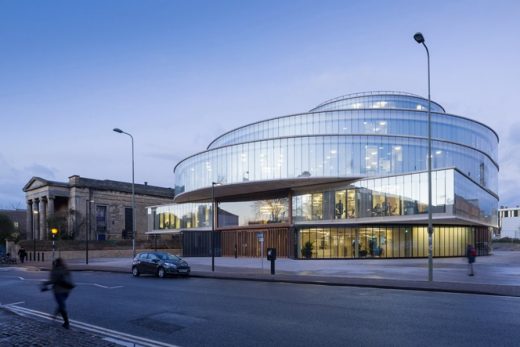
photo : Iwan Baan
St. Catherine’s College in Oxford, Manor Road
Architects: Purcell
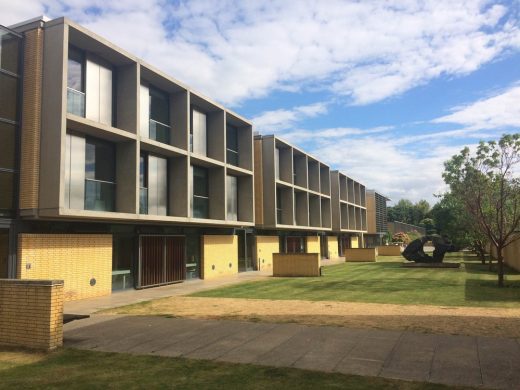
image courtesy of architecture office
St Clare’s College Oxford Building
Design: Hodder + Partners Architects
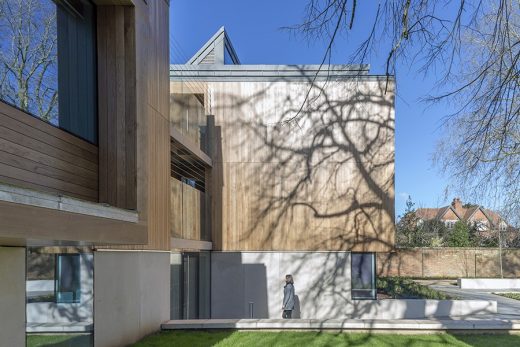
photo : Peter Cook
Oxford Architecture Walking Tours
Lincoln College Arts Centre
Design: Stanton Williams
St. John’s College Oxford – The Kendrew Quadrangle
Design: MJP Architects
Keble College Building
Design: Rick Mather Architects
Comments / photos for the Exeter College Library, University of Oxford building development design by Nex with Donald Insall Associates page welcome.

